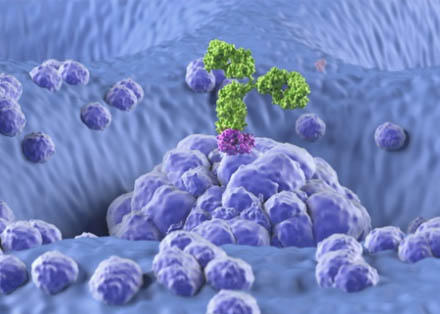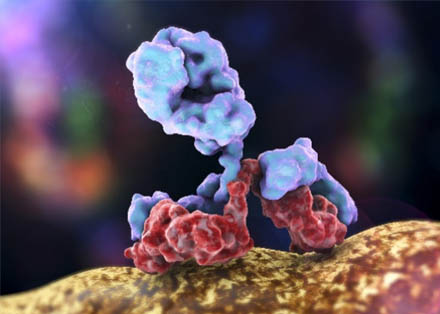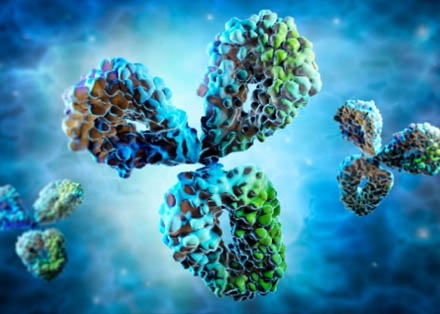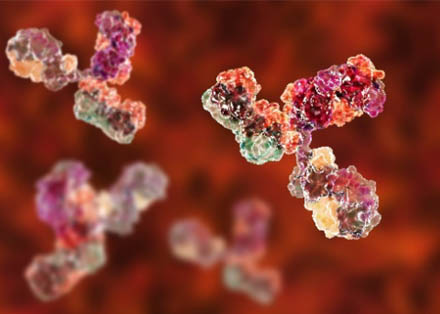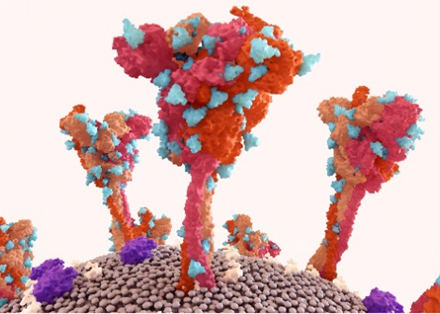GlycoRNA Functional Analysis Service
The identification of glycosylated RNAs (glycoRNAs) creates new opportunities to explore RNA molecular functionality. RNA molecules with sugar (glycan) modifications were originally thought to be exclusive properties of proteins. The presence of sugar chains alters RNA behavior by modifying its stability and cellular localization as well as its molecular interactions. The expanding research on glycoRNAs creates a growing demand for analytical tools to understand their functions. Equipped with advanced glycoRNA analysis technologies, Creative Biolabs is committed to providing comprehensive glycoRNA analysis service, including glycoRNA profiling service, glycoRNA functional analysis service and glycoRNA imaging service. Our functional analysis solutions for glycoRNA enables researchers to comprehend molecule functions in health and disease through efficient, customizable methods.
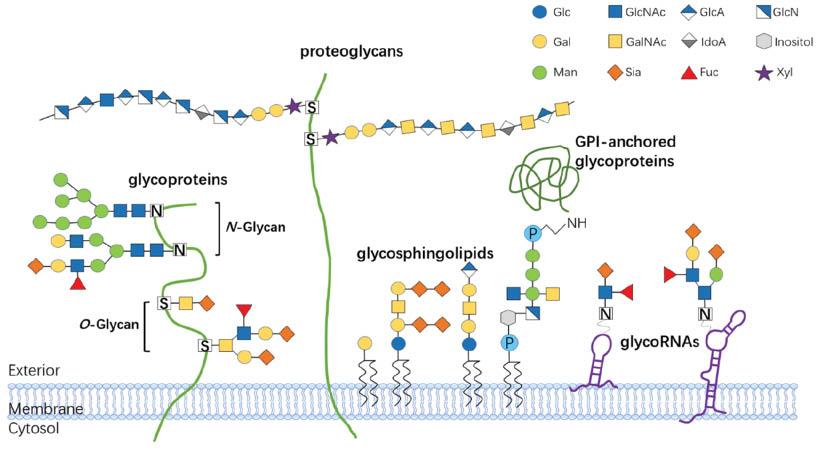 Fig.1 Glycoconjugates on the cell membrane (including glycoRNA).
Fig.1 Glycoconjugates on the cell membrane (including glycoRNA).
What Are GlycoRNAs?
GlycoRNAs are RNA molecules with added glycan chains, such as N-glycans or O-glycans. Enzymes add these sugars during or after RNA is made. They are often found on the cell surface or inside small extracellular vesicles (sEVs), like exosomes. They have many key features like:
- Sugars attach to specific spots on RNA, changing its properties.
- Involved in cell signaling, immune responses, and gene regulation. GlycoRNA can interact with lectins or adhesion molecules like Siglec-5 and P-selectin.
- Found on cell membranes or in sEVs, which carry messages between cells.
Types of GlycoRNAs
GlycoRNA classification depends on both their glycan composition and the RNA species they contain. The glycoRNA types split into two categories named glycoRNA-L and glycoRNA-S according to their glycan structures and the specific cells or tissues where they express themselves. The distinct biological functions of glycoRNA-L and glycoRNA-S arise from their structural differences. The immune modulation role of glycoRNA-L stems from its higher sialic acid content whereas glycoRNA-S contains more GlcNAc which may participate in inflammation or cancer metastasis.
| Type of GlycoRNA | Glycan Composition | RNA Species | Expression Pattern |
|---|---|---|---|
| GlycoRNA-L | Higher sialic acid content | Long non-coding RNAs, mRNAs | Found in most tissues and cell lines |
| GlycoRNA-S | Higher GlcNAc content | Small non-coding RNAs | Expressed in specific tissues like adipose and monocytes |
Why Functional Analysis Matters
GlycoRNAs do more than just exist—their functions shape cellular behavior:
- They help immune cells recognize other cells, like during inflammation.
- Changes in glycoRNA patterns may signal diseases like cancer.
- SEVs with glycoRNAs carry signals between cells, affecting processes like tumor growth.
But to use glycoRNAs in research or medicine, we need to know what they do. That's where functional analysis comes in. Our service offers tools to decode their roles, whether you're studying basic biology or developing new diagnostics.
How We Analyze GlycoRNA Functions: Our Approach
Functional analysis requires a mix of techniques to see how glycoRNAs act. At Creative Biolabs, we offer a step-by-step workflow to suit your goals:
1. Sample Preparation & Labeling
- Metabolic Labeling: Use sugar molecules with tags (e.g., Ac4ManNAz) to mark glycoRNAs as cells make them. These tags let us track and isolate glycoRNAs later.
- Sample Types: Work with cells, tissues, or biofluids like serum. We handle everything from cell cultures to rare clinical samples.
2. Detection & Identification
- RNA Sequencing (RNA-seq): Find out which RNA molecules are glycosylated and how they are expressed in different conditions.
- Mass Spectrometry (MS): Analyze the sugar chains on glycoRNAs—what sugars they have, how they're linked, and how they affect RNA function.
3. Imaging Techniques
- FRET Imaging: Visualize glycoRNAs on cell surfaces or in sEVs in real time. See how they interact with receptors like Siglec-5, which are key in immune cell communication.
- Confocal Microscopy: Get detailed images of where glycoRNAs are located and how they move within cells.
4. Functional Assays
- Cell Adhesion Tests: See how glycoRNAs help cells stick to each other, important for immune responses or cancer spread.
- SEV Analysis: Study glycoRNAs in extracellular vesicles to understand cell-to-cell signaling, especially in diseases like cancer.
Applications in Disease Research
Cancer Diagnostics
- SEV Biomarkers: Detect unique glycoRNA patterns in sEVs from blood samples to identify cancer types with high accuracy.
- Therapeutic Targets: Find glycoRNAs that help cancer cells spread or avoid the immune system, opening new paths for drug development.
Immune & Inflammatory Diseases
- Immune Cell Interaction: Study how glycoRNAs on immune cells bind to receptors like P-selectin, key for inflammation and tissue repair.
- Treatment Design: Target glycoRNA-receptor pairs to reduce excessive immune responses in diseases like rheumatoid arthritis.
Basic Biology Research
- RNA-Sugar Links: Understand how glycan modifications affect RNA stability, folding, and interaction with other molecules.
- New Discoveries: Identify unknown glycoRNAs and their roles in cellular processes like gene silencing or RNA transport.
Choosing the Right Methods for Your Study
Picking the best techniques depends on your goals. Here's a quick guide:
- For Surface Interactions: Use FRET imaging to see how glycoRNAs bind to cell surface receptors.
- For Global Profiling: Combine RNA-seq with MS to map all glycoRNAs and their sugar modifications in a sample.
- For Live-Cell Tracking: Metabolic labeling lets you tag glycoRNAs in real time, ideal for studying how they act in living cells.
Our team can help you choose the right mix of methods to get the insights you need, whether for a small pilot study or a large-scale project. If you are worry about how to choose the best-fit methods for your sample or object, do not hesitate to contact our 24-hour online experts for help.
Talk to An Expert
Our Service Advantages
Custom Plans for Your Research Focus
No cookie-cutter solutions here. Whether you're studying cancer, inflammation, or basic RNA science, we build workflows just for you. From prepping your samples to analyzing results, every step fits your goals. Plus, we work with any sample—cells, tissues, or biofluids—using gentle methods to keep glycoRNAs intact, even for rare or large datasets.
Cutting-edge Tech for Clear Answers
We use two key tools to decode glycoRNAs:
- Metabolic labeling + click chemistry to tag and isolate these molecules with precision, even when they're hard to find.
- Multi-omic integration (RNA-seq, mass spectrometry, imaging) to see the full picture—what glycoRNAs are there, what sugars they carry, and how they work in cells.
Expert Team by Your Side
Our scientists know glycoRNAs inside out. With years of experience in glycobiology and RNA research, they understand the tricky parts—like sugar instability or complex interactions—and design strong experiments to get reliable data. We're not just a service; we're your partners. We help refine your goals, solve problems, and explain results, so you can trust every step.
Data you can rely on
Quality matters. We use strict checks and proven methods to ensure your data is repeatable and publication-ready. Our tools turn complex datasets into clear, useful insights—no confusing jargon, just answers that move your research forward.
Flexible for Any Sample Type
Whether you have a tiny clinical sample or a big cell culture, we've got you covered. Our protocols are gentle but tough, preserving glycoRNA integrity so you get accurate results, no matter what you're working with.
GlycoRNAs are a bridge between sugar biology and RNA function, with huge potential in understanding and treating disease. Our glycoRNA functional analysis service offers the tools to decode their roles—from where they are in the cell to how they affect immune responses or disease progression. At Creative Biolabs, we focus on clarity and reliability. Our simple, effective methods, combined with expert support, make it easier to turn complex glycoRNA research into meaningful results. Whether you're a researcher uncovering new biology or seeking potential targets, we're here to help you understand what these molecules do and how to use them. Contact us today to discuss how our service can fit your needs.
Reference:
- Li, Xiuling, et al. "Glycan-RNA: a new class of non-coding RNA." BIO Integration 3.3 (2022): 124. Distributed under Open Access license CC BY 4.0, without modification. https://doi.org/10.15212/bioi-2021-0032


